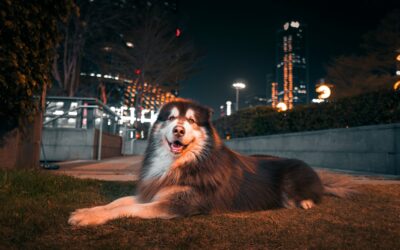Dogs are curious, affectionate, and often playful companions. If you’re a dog owner, you’ve likely wondered, “Why do dogs lick you?” Whether it’s a friendly greeting, a sign of affection, or just something they seem to enjoy, dog licking is a natural action often rooted in both instinct and learned behaviors.
This blog will explore the many reasons behind your dog’s licking behavior, from affection and communication to more serious issues like anxiety or obsessive licking. We’ll also share tips for interpreting when licking is harmless and what to do if it becomes excessive.

Benefits of Having an Affectionate Dog
An affectionate dog brings a wealth of benefits to their owner’s life, fostering happiness, health, and connection. Here are some of the key advantages of having a loving and attentive furry companion:
1. Emotional Support
Affectionate dogs provide unmatched emotional support to their owners. Their loyalty and loving gestures, such as cuddling and licking, can offer comfort during stressful or challenging times. Many people find that their dog’s constant presence creates a sense of stability and emotional well-being.
2. Stress Reduction
Interacting with an affectionate dog can significantly reduce stress levels. Studies have shown that petting a dog lowers cortisol (the stress hormone) and increases dopamine and serotonin, which are linked to feelings of happiness and relaxation. Just a few moments of bonding with your dog can improve your mood and lower anxiety.
3. Improved Mental Health
Having a dog that shows affection can help combat feelings of loneliness or depression. The unconditional love and companionship dogs provide encourage a sense of purpose and positivity for their owners, helping to create a healthier mindset.
4. Strengthened Bond
An affectionate dog helps to cultivate a deeper bond between pet and owner. Their expressions of love, whether through tail wagging, licking, or leaning against you, demonstrate their desire to connect and nurture a strong relationship based on trust and mutual care.
5. Encouragement to Stay Active
Affectionate dogs often encourage playful activities, from fetch sessions to outdoor walks. These shared activities not only improve physical health but also establish an enjoyable routine that reinforces the special connection between you and your pet.
6. Social Benefits
Having an affectionate dog can make social interactions easier. Friendly, loving dogs tend to attract attention from others during outings, creating opportunities for conversations and connections with fellow dog lovers. This can expand your social circle and foster new friendships.
7. Increased Happiness
The simple joy of being loved unconditionally by an affectionate dog is often enough to brighten any day. Their playful antics, combined with their genuine affection, contribute to a happier, more fulfilling life.
Having an affectionate dog means receiving a daily dose of love and joy. Their caring nature not only enhances your emotional and physical health but also promotes a sense of companionship and purpose that enriches your life in countless ways.
Why Dogs Lick People? The Basics
Dogs don’t experience the world in the same way humans do. With a sense of smell that’s many times more powerful than ours and taste buds designed to pick up subtle cues, licking provides them with valuable information about their surroundings.
For dogs, licking is instinctual and often learned during puppyhood. Puppies lick their mothers to seek attention and care, and this behavior continues with humans and other dogs as they grow into adult dogs. Licking is a form of communication, care, and even grooming that has been observed in both domesticated dogs and wild canids.
Reasons Why Dogs Lick People and Other Animals
Affection and Bonding
One of the most common reasons dogs lick people is to show affection. Licking releases endorphins, providing a sense of calm and pleasure to your pup. When your dog licks your face or hands, it’s often their way of saying, “I love you!”
Communication
Dogs use licking as a tool for communication. For example, they may lick you to seek attention or express submission. Puppies, for instance, learn to communicate with their mothers, siblings, and humans through licking behavior.
Grooming Instincts
Mutual grooming is common among animals, and dogs are no exception. Licking is natural when they interact with other dogs or humans. It’s their way of ensuring cleanliness and maintaining strong emotional bonds.
Taste and Smell
A dog’s sense of smell is incredibly powerful, and their licking can often be tied to particular scents or tastes they find interesting. Whether it’s remnants of food on your skin or natural bacteria, dogs often lick as a reaction to these stimuli.
Alleviating Anxiety or Stress
Many dogs lick excessively as a way to self-soothe. For instance, licking releases endorphins that create a calming effect, especially in situations causing anxiety.
Exploration and Curiosity
Dogs explore the world differently than humans, often utilizing their mouths to learn more about new people, animals, or objects. Licking offers valuable sensory input, helping them gather information about their surroundings.
When Licking Becomes a Problem | Excessive or Obsessive Licking
While a dog’s licking is often a display of love and affection, it can sometimes signal underlying issues that warrant attention. Understanding the context and frequency of their licking behavior is key to determining whether it’s something more than just a loving gesture. Here are some signs to watch for:
Excessive Licking
If your dog is licking compulsively or excessively, especially in one specific area on their body or yours, it could indicate discomfort or stress. Persistent licking might point to allergies, skin irritation, or even an injury that needs addressing.
Licking Accompanied by Whining or Restlessness
When licking is combined with whining, pacing, or other signs of distress, it might be a sign that your dog is feeling anxious or nervous. Separation anxiety or a sudden change in environment may be triggering this behavior.
Focused Licking of Objects
If your dog is licking objects like the carpet, furniture, or walls obsessively, this could indicate boredom, frustration, or even digestive discomfort. Dogs often display such behavior as a way of coping with unfulfilled mental stimulation or an upset stomach.
Unusual Changes in Behavior
Pay attention to your dog’s regular habits. If a sudden increase in licking accompanies a change in eating, drinking, or sleeping patterns, it could be related to an underlying medical condition. Consulting a veterinarian would be the best course of action in this case.
Recognizing these potential signs will help you determine whether your dog’s licking is a simple gesture of affection or something that requires a deeper look. Monitoring their overall behavior and consulting a professional when needed can ensure their well-being and happiness.
Reasons Behind Problematic Licking
Medical Issues
Excessive licking may indicate a medical condition, such as allergies, skin infections, or pain in a specific area. If you notice obsessive licking, a visit to the vet is essential to rule out any underlying issues.
Anxiety or Stress
Licking can be a sign that your dog is feeling anxious or stressed. Changes in their environment, separation anxiety, or boredom can trigger this behavior.
Behavioral Causes
Some dogs develop a habitual licking behavior caused by a lack of mental or physical stimulation. Obsessive licking may also stem from obsessive-compulsive disorder in dogs, requiring behavioral intervention.
How to Manage or Stop Licking
If your dog’s licking has become problematic, here are a few steps to help manage their behavior.
Redirect Their Focus
Offer a chew toy or an interactive treat to keep their mouth busy, redirecting their attention away from licking.
Observe Triggers
Pay close attention to when and why your dog is licking. Is it happening due to stress, boredom, or specific stimuli? Identifying the trigger can help you manage the behavior more effectively.
Positive Reinforcement
Reward your dog for appropriate alternative behaviors. For example, if they stop licking after being asked, provide a treat or verbal praise.
Consult a Veterinary Behaviorist
If licking persists or worsens, seek help from a professional, such as a veterinary behaviorist or dog trainer. They can assess your dog’s behavior and recommend a tailored plan.
When You Should Be Concerned
Although many dogs lick as a way to show affection or communicate, some behaviors warrant attention from a vet. Be sure to consult a professional if your dog experiences the following issues:
- Excessive licking of their own skin leading to irritation or hair loss
- An inability to stop licking you or other objects despite redirection
- Licking accompanied by signs of distress, anxiety, or other behavioral changes
Products and Brands to Help with Excessive Dog Licking
When dealing with excessive licking in dogs, certain products can help provide relief and address potential causes. Below is a curated list of effective products and trusted brands to help manage this behavior:
Zesty Paws Aller-Immune Bites
Zesty Paws offers these delicious supplements designed to support immune health and skin function for dogs prone to excessive licking due to allergies or itching.
KONG Classic Dog Toy
The KONG Classic is perfect for providing mental stimulation and distraction, redirecting licking behavior into a more productive activity. Stuff it with treats for enhanced engagement.
Vet’s Best Hot Spot Spray
This soothing spray is formulated with natural ingredients like aloe vera and tea tree oil to provide instant relief from itchy or irritated skin, reducing the urge to lick.
ThunderShirt Dog Anxiety Jacket
For dogs who lick excessively due to stress or anxiety, the ThunderShirt provides a calming effect by applying gentle, consistent pressure. It’s great for calming nervous pups.
Paw Balm by Natural Dog Company
Cracked or dry paw pads might cause licking, and this soothing balm moisturizes and heals, addressing excessive licking caused by paw discomfort.
PetLab Co. Probiotic Chews
Digestive health can impact your dog’s skin and behavior. These chews help improve gut health, which may reduce licking caused by gastrointestinal discomfort.
Blue Buffalo Basics Limited Ingredient Diet
Food allergies can trigger excessive licking. This limited ingredient diet dog food provides high-quality nutrition while eliminating common allergens.
These products, when used appropriately, can make a significant difference in reducing excessive licking in dogs. Always consult your veterinarian before introducing new products into your dog’s routine, especially for health-related concerns.

Kates K9 Pet Care provides pet care services to help with boredom in dogs, with love, mental stimulation, and exercise!
Appreciating Your Dog’s Licking Behavior | Why Do Dogs Lick You?
For most dog owners, a dog’s licking is simply a sign of love and affection. Your dog sees you as part of their pack, and licking helps to strengthen the bond between you.
Remember, licking is a natural behavior for dogs, reinforced by instinct and various stimuli in their environment. By paying close attention to when and why your dog licks, you can better understand their needs and ensure their well-being.
If your dog’s licking aligns with their usual affectionate nature, enjoy the gesture as another way they express their love!






